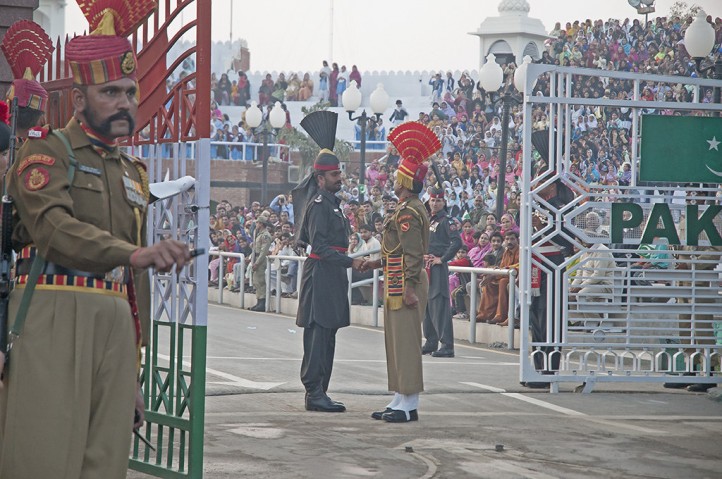by CONN HALLINAN
 Indian and Pakistani border guards shake hands at a village border crossing. PHOTO/Koshy Koshy/Flickr
Indian and Pakistani border guards shake hands at a village border crossing. PHOTO/Koshy Koshy/Flickr
As Donald Trump ascends to the White House, he’s wading into the most dangerous conflict on the globe.
President-elect Donald Trump’s off the cuff, chaotic approach to foreign policy had at least one thing going for it, even though it was more the feel of a blind pig rooting for acorns than a thought-out international initiative. In speaking with Pakistani Prime Minister Nawaz Sharif, the New York Times reported, Trump said he wanted “to address and find solutions” to Pakistan’s problems.
And what big problems they are.
Whether Trump understands exactly how dangerous the current tensions between Pakistan and India are, or if anything will come from the November 30 exchange between the two leaders, is anyone’s guess. But it’s more than the Obama administration has done over the past eight years, in spite of the outgoing president’s 2008 election promise to address the on-going crisis in Kashmir.
Right now that troubled land is the single most dangerous spot on the globe.
War, Famine, and Radiation
India and Pakistan have fought three wars over the disputed province in the past six decades and came within a hair’s breadth of a nuclear exchange in 1999. Both countries are on a crash program to produce nuclear weapons, and between them they have enough explosive power to not only kill more than 20 million of their own people, but also to devastate the world’s ozone layer and throw the Northern Hemisphere into a nuclear winter — with a catastrophic impact on agriculture worldwide.
According to studies done at Rutgers, the University of Colorado-Boulder, and the University of California-Los Angeles, if both countries detonated 100 Hiroshima-sized bombs, it would generate between 1 and 5 million tons of smoke. Within 10 days, that would drive temperatures in the Northern Hemisphere down to levels too cold for wheat production in much of Canada and Russia. The resulting 10 percent drop in rainfall — especially in Asian locales that rely monsoons — would exhaust worldwide food supplies, leading to the starvation of up to 100 million or more people.
Aside from the food crisis, a nuclear war in South Asia would destroy between 25 to 70 percent of the Northern Hemisphere’s ozone layer, resulting in a massive increase in dangerous ultraviolent radiation.
Cold Start, Hot War
Foreign Policy In Focus for more
